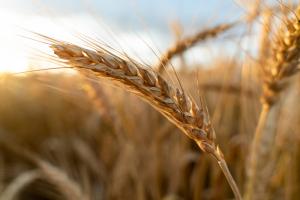While the impacts of air pollution on vegetation and crops are sometimes overlooked, they can take a high toll on food production. As the food and energy crises have recently shown the vulnerability of our food systems, the impacts of air pollution on agricultural yields and food production should be looked at carefully.
The UNECE Convention on Long-range Transboundary Air Pollution, has continuously improved the understanding of the impacts of air pollution on crops and other vegetation for more than 35 years through its International Cooperative Programme on Effects of Air Pollution on Natural Vegetation and Crops (ICP Vegetation), led by the UK Centre for Ecology & Hydrology At an online meeting this week (13-15 February 2023,), over a 100 experts from more than 30 countries participating in the programme, gathered to review new evidence of the impacts of certain air pollutants on vegetation.
Impact on food production and economic consequences
Some crops, including the staple food crops wheat, rice and bean, have been found to be particularly sensitive to certain types of air pollution. Ground-level ozone — formed when emissions from vehicles and industry (e.g., nitrogen oxides) react with other pollutants in sunlight — affects plant growth and is estimated to cause global crop losses for staple foods. For example, in 2015, estimated total wheat production losses for Europe due to ozone were 23.8M tonnes, greater than the annual production of Ukraine (21.8 M tonnes). Results from the recently concluded review of the Protocol to Abate Acidification, Eutrophication and Ground-level Ozone (Gothenburg Protocol), show that even with full implementation of the protocol, significant production losses of wheat due to ground-level ozone will still occur, with an estimated 16.8 million tonnes lost for Europe in 2050.
Other research findings from around the world show that the compounded effects of rising temperatures due to climate change and increasing ground-level ozone pollution will threaten wheat crops further in the coming years. In addition to impacts on food security, these crop losses will have significant economic consequences for producers and consumers.
Mosses as monitors of pollution
Naturally growing mosses are used as biomonitors of atmospheric deposition of pollutants, such as heavy metals and nitrogen, to assess spatial pollution concentration patterns and temporal trends across Europe and beyond. Since 1990, mosses have been sampled every five years in the framework of ICP Vegetation. and have provided a good indication of areas at risk from high pollutant deposition.
The latest surveys, discussed at this year’s meeting show that mosses can also be used to assess deposition of atmospheric microplastics. For example, the German moss survey 2020/21 showed that in all moss samples, microplastic was detected. Another survey carried out in the UK also confirmed the suitability of moss samples to monitor atmospheric deposition of microplastics.
With the international negotiations to develop an international legally binding instrument on plastic pollution entering their second year, plastic pollution has been high on countries’ political agenda. The results from the biomonitoring surveys hence underpin the importance and urgency of reducing plastic pollution through a global instrument.


